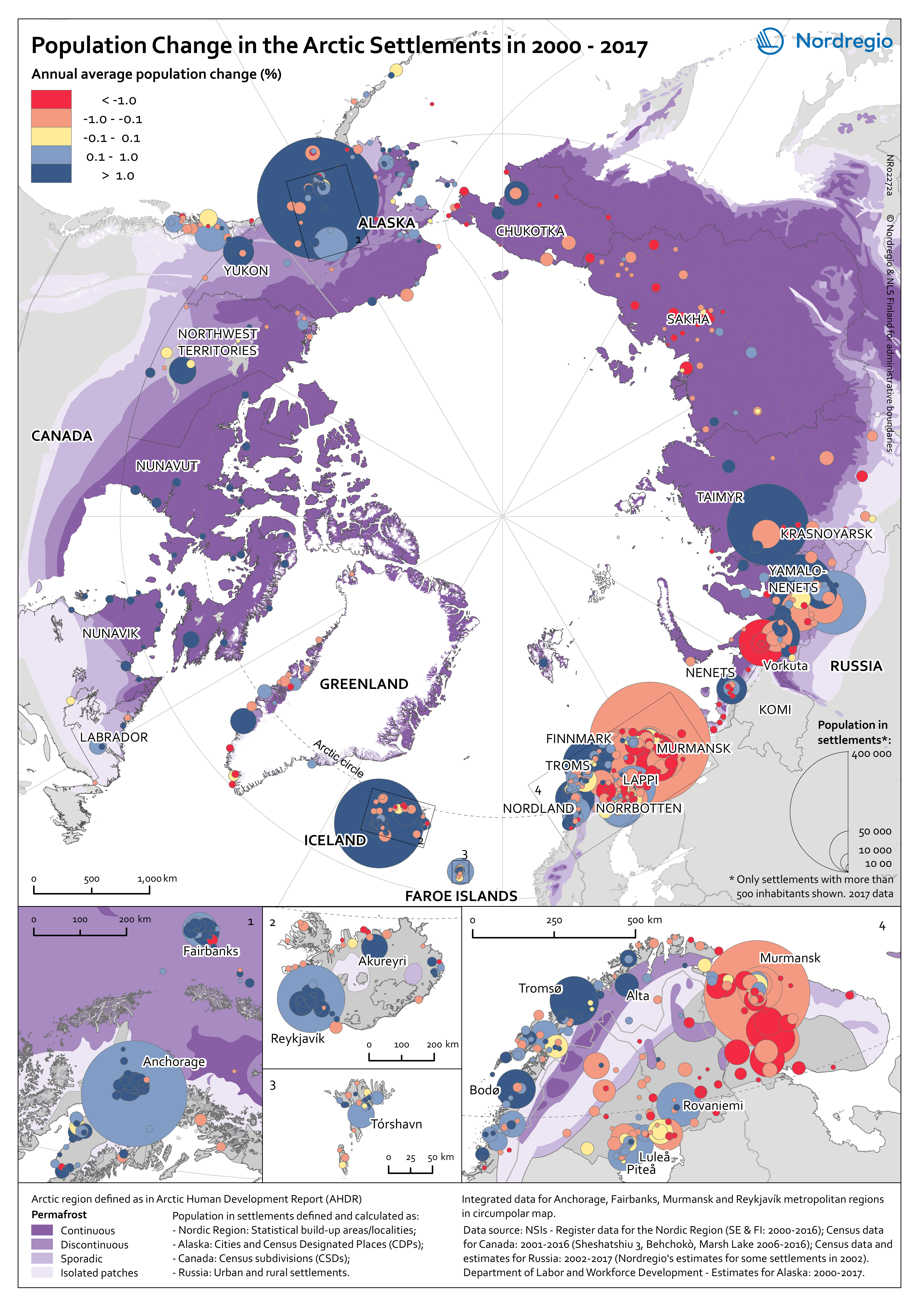The map provides an overview of population change during the period 2000 to 2017 for settlements with 500 inhabitants or more. Alongside, there are four zoomed-in maps, showing Arctic Fennoscandia, Iceland, Faroe Islands, and Alaska, where the settlement density is high.

In Alaska, the reason for population decline in smaller settlements which are located far away from the two metropolitan regions Anchorage and Fairbanks is out-migration, which has cancelled out the positive natural population growth. While almost all the settlements inside the two metropolitan regions have witnessed population growth, and their growth is even more significant than the two cities themselves. Proximity does matter when it comes to the migration of people out from the densely populated urban centres.
In Canada, the populations of the three Northern Territories reside in a quite limited number of settlements with large tracts of uninhabited land. Yukon’s population resides in 25 settlements with 70 percent residing in Whitehorse. The population of the NWT resides in 33 communities with 48 percent in the capital of Yellowknife. The population of Nunavut resides in 25 communities. Nunavut has a deliberate policy of diffusing public-sector jobs to smaller communities outside the capital of Iqaluit, thus the capital contains only 21 percent of the population.
The Greenlandic population of 55,877 (as 1 January 2018) resides in 89 localities including 17 towns, 54 settlements, 5 farms, and 5 stations. Nearly one-third of the population live in the capital of Nuuk.
In the Faroe Islands about 40 percent of the population resides in the capital of Torshavn. The rest of the population resides in a number of smaller coastal settlements on the sixteen (of eighteen) inhabited islands. The government has long had a policy of linking all settlements via the national road system through a series of bridges and undersea tunnels to connect the entire population and reduce population decline in remote villages.
The Arctic regions of Norway, Sweden, and Finland have more diversified economies and larger populations. Most of the smaller settlements in Fennoscandia have witnessed population decline between 2000 and 2017, with northern Norway as an exception. The dominating pattern in Fennoscandia is population growth in larger settlements and population shrinking in surrounding smaller settlements. This is similar to the pattern observed in the North Atlantic – Iceland, Greenland and Faroe Islands. The capitals – Reykjavik, Nuuk, Torshavn, and regional centres have been receiving inhabitants both domestically and internationally; while the settlements located in sparsely populated areas are losing their attractiveness.
As part of the Nunataryuk project, Nordregio is tasked with compiling a socio-economic atlas of population centres in the Arctic.

